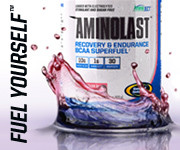We’ve all been there - a couple of rounds into training and suddenly you’re so tired you can’t even breathe. And if you’ve ever had to tap out before from bad cardio, you know it’s pretty embarrassing! (Not that I would know from personal experience, just something I heard from a friend.)
So why is it that 5 or 10 minutes after dragging your sorry carcass off the mat you can roll again? How much of that feeling of being utterly exhausted is physical, and how much is in your mind?
South African researcher Tim Noakes has a theory about fatigue that’s been gaining traction in the scientific community the last few years. He believes that your mind houses a ‘central governor’ that monitors a multitude of physiological signals like core temperature, blood oxygen levels, muscle activity, and other important factors. If the signals start to indicate you’re in danger of damaging your body, the governor limits the amount of muscle fiber you can recruit for your activity.
I first learned about muscle fiber recruitment when I had surgery to reconstruct my ACL. Even if you can squat hundreds of pounds with no trouble, after surgery you’ll have trouble doing a single body weight squat. You literally can’t lift the weight of your body using the damaged leg. After a few weeks of therapy though, you’ll be back to a significant percentage of your strength. It’s not that you got weaker and then stronger – the trauma from the surgery limits your ability to recruit a high percentage of your available muscle fibers. Your body does this as a protective measure after surgery, and it appears the same effect is in place when you are so exhausted you have trouble moving on the mat.
One of the signals the ‘central governor’ is looking for is how your levels of ATP are holding up. You recycle every piece of ATP in your body every six minutes when you are just resting. During intense activity that can skyrocket to every 3 minutes or even less as your body rushes to provide the energy you need to continue.
You might want to consider adding a few specific nutrients to your water before class, about half an hour before you train. (You are getting fully hydrated before training right?) I would suggest approximately 5 grams of D-Ribose, 500 mg of Acetyl-L-Carnitine, and 30 mg of CoQ10 as a good start. These nutrients can work synergistically to improve your body’s ability to quickly recycle your ATP stores, and you’ll be able to train longer before fatigue sets in.
And just because some of that fatigue might be in your mind, don’t think you can use willpower to defeat it. Try holding your breath till you pass out and you’ll experience the amazing ability of your primal brain to override your best conscious efforts. The same holds true for trying to defeat your central governor.
The good news is that getting your cardio in top shape for jiu-jitsu isn’t that difficult. The first thing to do is just train more! As your body becomes more efficient at the act of jiu-jitsu you’ll actually use less energy to perform a given technique. You’ll recruit a higher percentage of the available muscle fibers and they’ll use less energy on a given task.
You should also add in some high intensity training on your off days, 2 or 3 times per week. Warm up for 5-10 minutes and then perform 30 seconds of max effort full body exercise (sprints/stairs/burpees/etc.) followed by 2-4 minutes of active rest (walking/stretching). Repeat 10 times. This simple routine will massively improve your cardio in a very short time.
So get that cardio fixed and Stay Alpha!

Bill Thomas is the founder of Q5 Labs. He is a purple belt training with Aaron Blake in Boothbay Harbor Maine and has been grappling and coaching youth wrestling for over 30 years.





